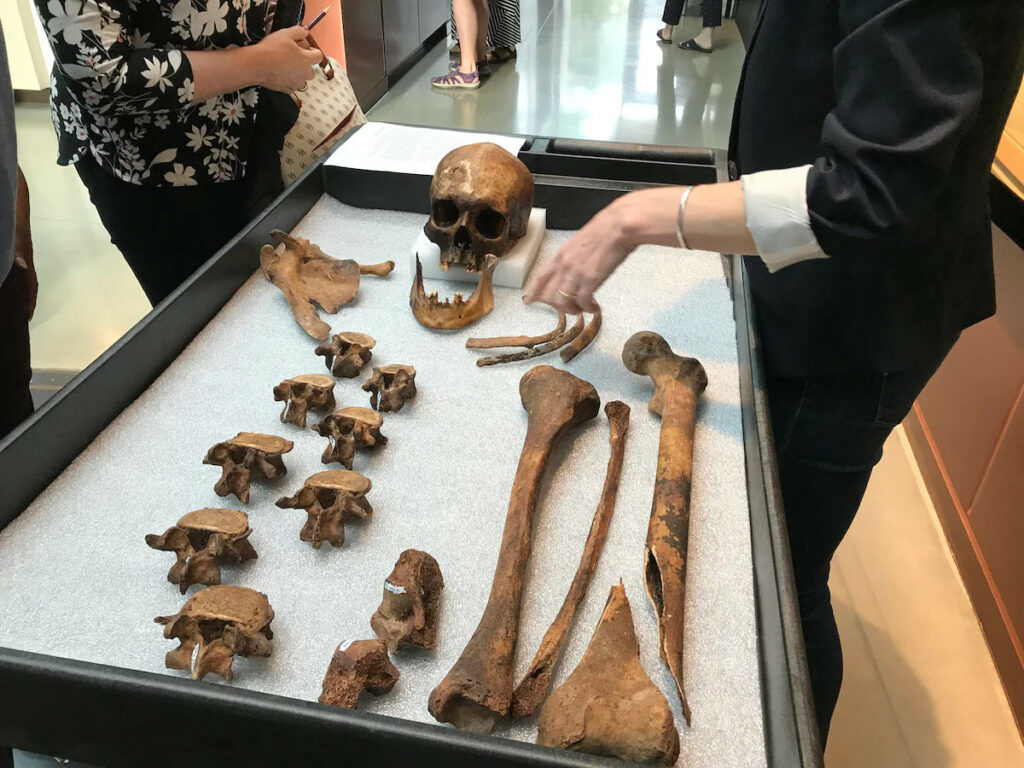In 1990, a shocking discovery was made by children in Griswold, Connecticut, when they stumbled upon skulls near a gravel pit. Further excavations uncovered 27 graves, including one belonging to an unidentified middle-aged man whose coffin was inscribed with the code “JB55”. The peculiar arrangement of his remains led archaeologists to believe that he was considered a vampire by his contemporaries.

Crossing the Legs: A Common Practice to Prevent Vampires from Rising
The man’s thigh and leg bones were intentionally placed in a crossed position beneath his skull, a practice believed to prevent the dead from rising. At the time, the DNA sample extracted from his femur could not reveal his identity due to technological limitations.
Tracing the Identity of JB55
In 2019, researchers from the US National Museum of Medicine and Health (NMHM) successfully traced the identity of the unknown man, revealing him to be John Barber. The letters on his coffin and the indicated age helped in this identification. Bone fragments suggested that Barber was a middle-aged laborer who likely suffered from tuberculosis, as evidenced by lesions on his ribs.

Tuberculosis and Vampire Superstitions
Tuberculosis, or consumption, was often fatal in the early 19th century due to the lack of antibiotics. Its symptoms, including bloody cough, jaundice, and red, swollen eyes, led people to believe that those who died from the disease would return as vampires to infect the living. This belief stemmed from a lack of understanding about bacteria and pathogens.
Facial Reconstruction and DNA Analysis

Researchers from Parabon NanoLabs in Virginia presented a facial reconstruction of John Barber and conducted DNA analysis on his remains at the International Symposium on Human Identification (ISHI) in Washington, D.C. The findings confirmed that Barber suffered from tuberculosis and died at the age of 55. He had fair skin with freckles, brown or black hair, and likely hazel eyes.
